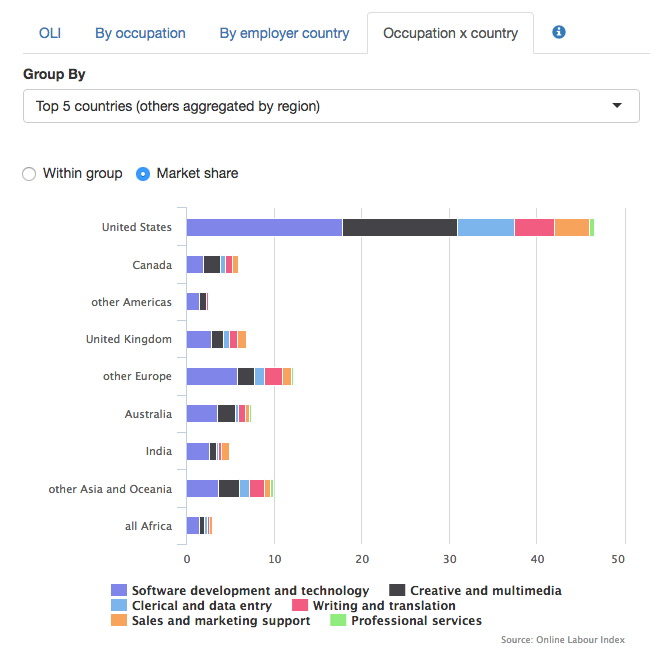The Online Labour Index (OLI), produced by Otto Kässi and Vili Lehdonvirta as part of the iLabour project at the Oxford Internet Institute, is the “first economic indicator that provides an online gig economy equivalent of conventional labour market statistics. It measures the utilization of online labour across countries and occupations by tracking the number of projects and tasks in real time.” The OLI, launched in September 2016, tracks all the projects/tasks posted on the five largest English-language online labour platforms.
Otto Kässi explains that online labour platforms here “are understood as platforms through which buyers and sellers of labour or services transact fully digitally… That is, we require that the worker and employer are matched digitally, the payment is conducted digitally via the platform, and that the result of the work is delivered digitally, excluding platforms for local services such as Uber and Airbnb.”
A quote in The Boston Globe Magazine explains in another way that “gig economy,” is the the hip-sounding term that describes “those Americans who make their livings in nontraditional ways — nontraditional meaning ‘in ways not limited to a 9-to-5 job’ or, framed in less optimistic terms, ‘in ways that don’t usually offer health insurance.'”
The OLI shows daily value and 28-day moving average, in addition to data three ways: 1) By occupation, 2) By employer country, and 3) Occupation x county (pictured above).

